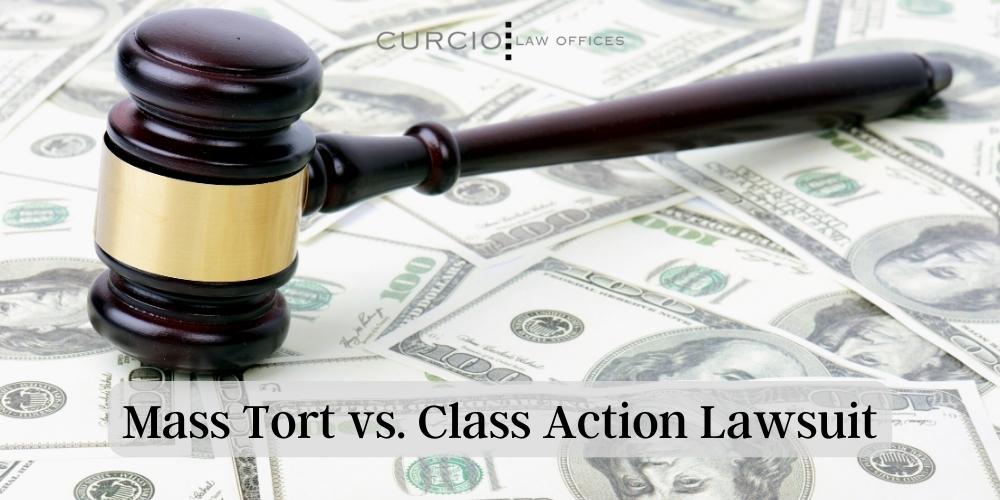The Archer-Daniels-Midland Class Action Lawsuit Unpacked: Stay Educated
Wiki Article
Demystifying Class Activity Legal Actions: A Closer Take A Look At Legal Proceedings
Class action claims can be intricate and intimidating, often shrouded in a veil of secret for those unknown with the lawful process involved. From comprehending the requirements for course activity eligibility to the function of course reps, and from the procedure of course certification to the resolution of these suits, we will unwind the ins and outs and lost light on the inner functions of this legal system.Comprehending Course Action Claims
Comprehending Course Action Claim requires an extensive evaluation of the legal procedures associated with collective litigation. Course action lawsuits are a kind of lawful activity where a group of individuals with similar claims or grievances collaborate to launch a claim against a common defendant. This kind of lawsuits enables individuals with limited resources to jointly look for justice, as it integrates the toughness of numerous specific claims right into a solitary lawful action.The process begins with the identification of a lead plaintiff or class representative that files the initial complaint in support of the whole course. The court after that figures out whether the situation meets the needs for course accreditation, that include commonness, numerosity, typicality, and competence of representation. If licensed, the court informs potential course members, providing an opportunity to opt-out if they desire to pursue their claims individually.
As soon as the class is certified, the lawsuits proceeds via different stages, consisting of discovery, motion technique, and, if needed, test. The outcome of the lawsuit can result in a judgment or a negotiation, which is binding on all class participants unless they pick to opt-out. Class activity legal actions can include a large range of lawful problems, such as customer security, safeties scams, employment discrimination, and ecological injury.
Comprehending the subtleties of class activity claims is important for both plaintiffs and accuseds associated with cumulative litigation. It requires an extensive understanding of the legal demands for certification, the legal rights and responsibilities of course participants, and the prospective advantages and risks linked with safeguarding or going after versus course action cases.
Identifying Class Action Eligibility
To figure out whether a lawsuit qualifies as a course activity suit, certain standards should be satisfied. These standards are made to ensure that the case can properly stand for the interests of a large group of individuals who have experienced comparable harm or have been affected by the same issue. The key aspect in determining course action eligibility is the visibility of a typical concern or problem that influences all potential class members.Firstly, a class activity legal action requires numerosity, which indicates there need to be a considerable number of potential class participants entailed. This makes certain that a course action is an effective way to deal with the claims of a large team of people, as opposed to having everyone submit a specific claim.
Secondly, there have to be commonness among the claims of the possible course members. This means that there have to be a typical concern of law or reality that is central to the instance. If each prospective class participant's insurance claim is unconnected and distinct to the others, a class activity may not be ideal.

The Duty of Class Rep
Course representatives play a vital role in course action claims by standing for the interests of the entire course. These people are picked from within the class to work as the public face of the suit and are liable for making choices in behalf of all class participants. The duty of class representatives includes numerous responsibilities and responsibilities throughout the lawful process.
One of the key obligations of class reps is to supply details and aid to their fellow class members. They work as a point of get in touch with and interaction in between the course participants and the lawyers representing them. This consists of maintaining the course members informed about vital updates, addressing their inquiries, and resolving any worries they might have.
Course agents likewise have the responsibility to actively participate in the litigation procedure (Archer-Daniels-Midland class action lawsuit). This entails functioning carefully with the attorneys to develop lawful methods, collecting evidence, and providing testament if essential. They have to be proactively involved in all aspects of the instance to make sure that the very best interests of the whole course are stood for
Additionally, class agents are in charge of accepting settlements or other resolutions reached website here in the lawsuit. They have to meticulously evaluate the terms of the negotiation and choose that remains in the best passion of the entire course. This decision-making procedure requires mindful consideration and consultation with the course participants.
The Process of Course Accreditation
The process of accrediting a class in a course activity suit includes a detailed analysis of particular standards to identify if the instance meets the essential requirements for course certification. Class qualification is a vital step in the litigation procedure as it determines whether a read here claim can continue as a class action, permitting a large team of individuals with similar insurance claims to be stood for collectively by one or a few individuals.To acquire course certification, the plaintiff should show that the suggested class satisfies specific prerequisites. Typicality needs that the insurance claims or defenses of the class agents are common of those of the class. Competence of depiction makes certain that the course reps will relatively and appropriately protect the interests of the course.
If the suggested class meets the essential demands,The court will scrutinize these standards and the plaintiff's proof to establish. The court may also take into consideration various other elements, such as whether a class action is the premium technique to fix the dispute and whether the course is sufficiently natural.

Once the court gives course accreditation, the claim can proceed as a class activity, permitting the complainants to collectively seek alleviation and potentially receive a judgment or settlement that profits the entire class.
Handling Course Activity Suits
As soon as course certification has actually been given, the following action in solving a course action suit is to navigate the procedure of lawsuits or negotiation negotiations. Litigation refers to the legal procedures in court, where the complainant's lawyer presents evidence and disagreements to sustain their cases, and the defendant's attorney counters with their own evidence and disagreements. This procedure can entail numerous stages, such as pretrial activities, exploration, and trial.On the other hand, settlement negotiations include conversations in between the events to get to a mutually acceptable resolution without going to trial. Archer-Daniels-Midland class action lawsuit. Negotiation offers may be made at any phase of the lawsuits procedure, and if both events concur, a negotiation arrangement is gotten to. This contract commonly outlines the conditions of the negotiation, consisting of any type of monetary payment, injunctive alleviation, or other treatments. Once the settlement is completed, it is presented to the court for approval.
Conclusion
Finally, course action lawsuits play an essential duty in supplying justice and payment to large teams of people more that have been harmed by the same entity. By appointing and licensing a class course agents, the lawful process comes to be a lot more efficient and obtainable for the complainants. Solving these lawsuits can be a facility and lengthy procedure, but it is crucial in holding companies responsible for their activities and ensuring reasonable outcomes for all impacted events.From comprehending the standards for class activity qualification to the function of course representatives, and from the process of class qualification to the resolution of these suits, we will certainly unravel the ins and outs and lost light on the inner functions of this lawful mechanism. The crucial variable in identifying course action qualification is the presence of a typical inquiry or issue that impacts all potential class participants.
If each possible class member's insurance claim is unconnected and unique to the others, a class activity might not be appropriate.
Class reps play an essential function in course activity lawsuits by representing the rate of interests of the whole class.As soon as course qualification has been given, the next step in resolving a class action suit is to navigate the process of litigation or settlement negotiations.
Report this wiki page